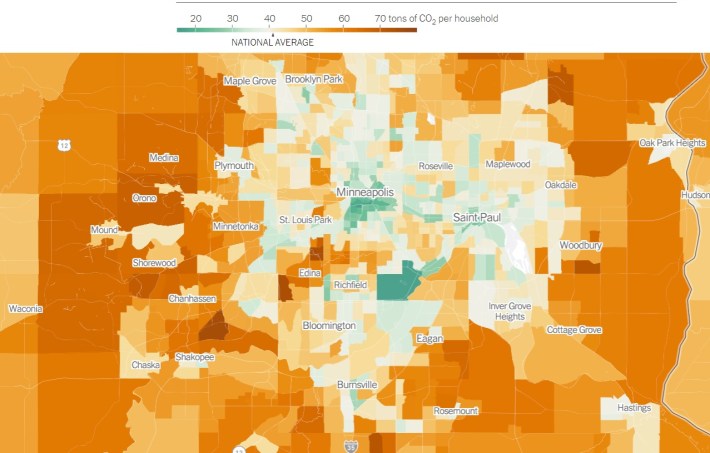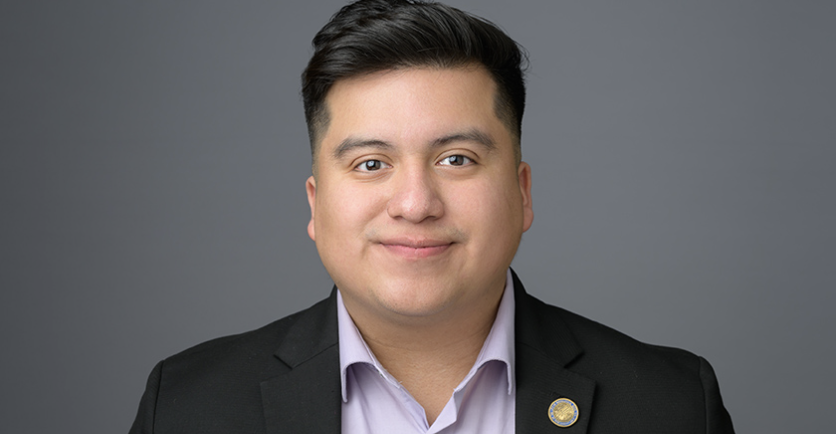Welcome back to The Flyover, your daily midday digest of what local media outlets and Twitter-ers are gabbing about.
Moral of The Grinch Flies Over Cops’ Head
The Anoka County Sheriff’s Office arrested the Grinch yesterday. It was a cute little photo op, though the Facebook comments reveal that the stunt actually made some people cry. Anyway, not to kill an ant with sledgehammer, but... the whole point of How the Grinch Stole Christmas is that the Grinch doesn’t need to be locked up to have a change of heart. Instead, he’s transformed by hearing all those freaky little insect people singing even though he’s swiped their gifts. He becomes a part of their community without any threat of punishment. In fact, you might call The Grinch an argument for restorative justice instead of incarceration. Anyway, looking forward to Anoka’s update of A Christmas Carol, where three cops show up to Scrooge’s house without a warrant and harass him.
Trylon Volunteers Pick Best Movie Ever
Every 10 years, the British Film Institute’s magazine, Sight & Sound, polls film critics and compiles the results. The poll has had quite the cultural impact in the past—for instance, it’s a big reason why Citizen Kane was conventionally known as the best film ever for years. This year, Chantal Akerman’s Jeanne Dielman, 23 quai du Commerce, 1080 Bruxelles, a masterpiece of feminist slow cinema that’s quite a change from previous winners, broke into the top slot. Riffing off the new Sight & Sound results, our pals at the Trylon polled their volunteers and published the results on their blog, Perisphere. The No. 1 Trylon pick? David Lynch’s Mullholland Drive. Read on through the results and you’ll find a useful list of "Oh yeah, I’ve always meant to watch that” movies you can peep through when you’re stuck inside this winter and looking for distractions. And while we’re on the subject, Trylon Jeanne Dielman screening when?
Keith Ellison Joins Brief Siding with Workers’ Right To Strike
In 2017, a group of Teamsters walked off their jobs at Glacier Northwest Inc. after their collective bargaining agreement expired. Badass! The problem? The strikers worked in concrete, and some of the vehicles left to languish were filled with the stuff, which eventually hardened. (Actually, that is even more badass.) The Vancouver, Washington-based company decided to sue the International Brotherhood of Teamsters Local Union No. 174, alleging that they intentionally destroyed the business’s property; the workers argued that they have a right to strike when contract negotiations fail. The Washington Supreme Court sided with the union, so now Glacier Northwest is taking it all the way to the U.S. Supreme Court. The case will be heard in January, but for now 16 state attorneys general, including Keith Ellison, have signed an amicus brief asking the court uphold workers' right to strike. “The right to strike is one of the most important tools workers have to fight for their rights and afford their lives,” Ellison said in a statement. Hopefully union workers fare better in the SCOTUS than railroad employees did in the U.S. Senate.
NYT Emissions Map: Minneapolis Good, Edina Bad
When it comes to climate change finger-pointing, density is important. On average, city dwellers have shorter shopping trips and work commutes, plus smaller homes and apartments to heat and cool. Money is important, too. Blue-blood households acquire all sorts of doodads with which to fill their McMansions, and splurge on fancy trips as well. Thus, the cake eater blame that can be gleaned from the New York Times’ new data visualization map of planet-warming emissions. On the map, we see that wealthy western Twin Cities suburbs like Edina and Orono glow red, signifying "much higher" than average emissions related to transportation, housing, food, goods, and services.
Meanwhile, the city centers of Minneapolis and St. Paul emit a cool blue that suggests lower than average levels. Those trends are mirrored in and around metropolitan areas throughout the U.S., researchers found. “When individuals or households want to know what influence they have over emissions, a consumption-based carbon footprint is the most relevant indicator,” Chris Jones, director of the CoolClimate Network at the University of California, Berkeley, told the NYT. “And it can help us see what sorts of larger systemic changes are necessary.” Complicating matters: There's nowhere to live, and everything is unaffordable. Poke around Minnesota for yourself over at the Times—it’s a whole lotta existentially wrenching fun. We’ll momentarily drop our allegiance to all things paywall and embed the metro snapshot below.








